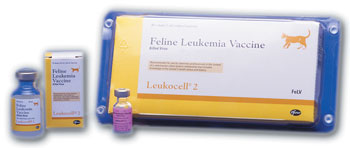Newsletter

The veterinarians and staff at the Sonoma County Mobile Veterinary Hospital are pleased to provide you with an online newsletter. This fun and fact-filled newsletter is updated on a regular basis.
Included in the newsletter are articles pertaining to pet care, information on our animal hospital, as well as news on the latest trends and discoveries in veterinary medicine.
Please enjoy the newsletter!
Current Newsletter Topics
Feline Leukemia
Feline leukemia virus (FeLV) is one of the major causes of illness and death in domestic cats. The virus is contagious and spreads primarily through intimate nose-to-nose contact with infected saliva. This very often occurs during cat fights, grooming, and mating. Contaminated urine, blood, and feces are also sources of infection. The virus can cross the placenta, infecting kittens while still in the mother's uterus. Nursing kittens can become infected from contaminated milk if the queen is infected with the virus.

There are no symptoms that are specific for FeLV infection. Tumors, anemia (low red blood cell count), white blood cell and platelet disorders and numerous immune-mediated diseases are common conditions. The main effects of the virus are on the cat's immune system making him or her extremely susceptible to any type of infection. Respiratory, oral and skin infections are common. Chronic digestive and urinary tract problems are also encountered. Feline Infectious Peritonitis, Hemobartonellosis, and Toxoplasmosis are often seen in cats that are FeLV positive.
Most veterinary hospitals are equipped for feline leukemia virus testing. The test is well worth the money and is used to diagnose FeLV-related illnesses, detect subclinical infections, and identify FeLV infections in multi-cat households (and catteries). It is highly advisable to test any cat or kitten before introducing him or her into a new home.

Due to the devastating consequences of this disease, vaccination is often recommended. It has been shown that vaccinating against feline leukemia reduces the risk of FeLV infection. Vaccinations are administered at eight to 10 weeks of age (or older) followed by a second dose two to four weeks later. Thereafter, booster vaccinations are given regularly. All available vaccines produce less than 100 percent protection against FeLV; therefore, other protective measures must be taken into consideration. The most important of these measures is to keep healthy, uninfected cats away from potentially infected cats. Potentially infected cats are stray cats, free roaming cats, and cats that are not vaccinated or tested for feline leukemia.
[ Search Articles ] [ Article Index ] [ Previous Page ]
